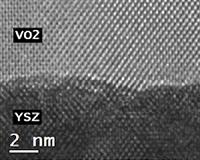 |
Washington DC (SPX) Apr 27, 2010 X-ray studies and fundamental calculations are helping physicists gain molecular level insight into the workings of some magnetic shape-memory materials, which change shape under the influence magnetic fields. Shape-memory materials could potentially serve as light weight, compact alternatives to conventional motors and actuators. But developing practical devices will require creating materials that exhibit much larger changes in shape than most of the known shape-memory materials. A paper appearing in the Physical Review Letters reports on the efforts of a team of Japanese physicists who probed the changes in a magnetic shape-memory material at the molecular scale. The work is highlighted with a Viewpoint article by Antoni Planes (Universitat de Barcelona) in the April 25 edition of APS Physics (physics.aps.org). The new research focused on a shape-memory alloy made up of nickel, manganese and tin. In its ideal form, the alloy is a crystal with each element occupying specific crystal locations relative to one another. In some versions, however, excess manganese atoms replace some of the tin atoms. Although the compositional change is slight, it can have significant effects on the alloy's behavior. X-ray spectroscopy allowed the researchers to observe the microscopic characteristics of the alloy to see precisely how the excess manganese atoms affect the alloy's behavior. By studying the way that composition affects a shape-memory material, and comparing measurements to theoretical calculations, it will be possible to understand what makes the materials work, and allow physicists to develop new and improved varieties shape-changing metals.
Share This Article With Planet Earth
Related Links American Physical Society Space Technology News - Applications and Research
 Materials Research Advances Reliability Of Faster Smart Sensors
Materials Research Advances Reliability Of Faster Smart SensorsRaleigh NC (SPX) Apr 22, 2010 In military and security situations, a split second can make the difference between life and death, so North Carolina State University's development of new "smart sensors" that allow for faster response times from military applications is important. Equally important is new research from NC State that will help ensure those sensors will operate under extreme conditions - like those faced in Afgh ... read more |
|
| The content herein, unless otherwise known to be public domain, are Copyright 1995-2010 - SpaceDaily. AFP and UPI Wire Stories are copyright Agence France-Presse and United Press International. ESA Portal Reports are copyright European Space Agency. All NASA sourced material is public domain. Additional copyrights may apply in whole or part to other bona fide parties. Advertising does not imply endorsement,agreement or approval of any opinions, statements or information provided by SpaceDaily on any Web page published or hosted by SpaceDaily. Privacy Statement |